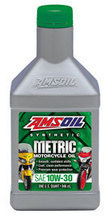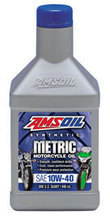INDEPENDENT NATIONAL DEALER
Nationwide-USA
San Diego, CA
(800) 653-0323
Why Using Synthetic Motorcycle Oil in your Bike is Better?
Motorcycle engines and automotive engines function differently, and the lubricants that service them have different requirements. Six crucial differences between motorcycle and automotive engines are outlined below to illustrate why oil engineered for motorcycles is the best choice for your bike.
Operational Speed
Motorcycles tend to operate at engine speeds significantly higher than automobiles. This places additional stress on engine components, increasing the need for wear protection, and subjects lubricating oils to higher loading and shear forces. Elevated operating rpm also promote foaming, which can reduce an oil’s load-carrying ability.
Compression Ratios
Motorcycles tend to operate with higher engine compression ratios than automobiles, which places additional stress on engine components and increases engine operating temperatures, placing greater demands on motorcycle oil to reduce wear. Higher operating temperatures also promote thermal degradation of the oil, reducing its life expectancy and accelerating the formation of engine deposits.
Horsepower/Displacement Density
Motorcycle engines typically produce more horsepower per cubic inch than automobile engines, which exposes the oil to higher temperatures and stress.
Variable Engine Cooling
In general, automotive applications use a sophisticated water-cooling system to control engine operating temperature. Similar systems can be found in motorcycle applications, but most are air-cooled or use a combination air/oil design. Operating temperatures in air-cooled bikes can skyrocket in stop-and-go traffic, promoting oxidation and causing oil to thin, reducing their load-carrying ability.
Multiple Lubrication Functionality
Many motorcycles have a common sump supplying oil to both the engine and transmission. In such cases, the oil is required to meet the needs of both the engine and the transmission gears. Many motorcycles also incorporate a wet clutch within the transmission that uses the same oil.
Inactivity
Whereas automobiles are used on a daily basis, motorcycle use is usually periodic and, in many cases, seasonal. These extended periods of inactivity place additional stress on motorcycle oils. In these circumstances, rust and acid corrosion protection are of critical concern.

AMSOIL Synthetic Motorcycle Oil Delivers What Bikers Want
Over 80 percent of survey respondents rate engine protection and quality as important or very important when selecting motorcycle oil. Viscosity grade and motorcycle-specific formulations are also important or very important to a majority of respondents. Interestingly, price was the sixth most important factor, indicating most bikers are willing to pay a premium for motorcycle oils that help them get the best performance and most years from their engines. Results indicate what motorcyclists want in a motor oil is exactly what AMSOIL Synthetic Motorcycle Oil delivers.
Keeping Bikes Longer
The demographics of the U.S. motorcycle fleet may have played a large role in how bikers responded to the survey. Sales of new bikes, as reported by the Motorcycle Industry Council, reached 452,400 in 2012. However, over half of the 10 million bikes in the U.S. fleet are more than seven years old while almost 25 percent predate 1995. Bikers are keeping their motorcycles longer and selecting lubricants that help them do so by maximizing engine protection and longevity.
Motorcycle-Specific Formulations
Bikers also value motor oils formulated specifically for motorcycles, demonstrating that many understand the unique challenges motorcycles present to lubricants and the need to use lubricants formulated to meet those challenges. Motorcycles run hotter and at higher rpm than passenger cars/light trucks – conditions that require robust oils formulated to resist viscosity loss due to extreme heat and mechanical shear. In many bikes, the oil must lubricate the engine, transmission and primary chaincase simultaneously. Effectively protecting against engine and gear wear while delivering superior clutch performance requires a balanced oil tailored to protect all critical areas. Passenger-car/light-truck motor oils simply aren’t designed to meet the needs of motorcycles. However, 59 percent of respondents indicated an API-certified oil was very important, indicating there is still limited knowledge of lubricant specifications and their applicability.
Synthetics on the Rise
Full-synthetic oils rate as important or very important to 42 percent of respondents. Where bikers once had to be convinced of synthetics’ superiority, many now understand synthetics are better-suited to protect their engines in the toughest riding conditions. The survey also found that the strength of brand reputation and explicit product quality claims are two key differentiators in the market. The AMSOIL brand signifies industry-leading quality due to the company’s presence at the largest and most influential motorcycle rallies in North America – including Sturgis, Daytona Bike Week and Laconia Motorcycle Week – and its sponsorships in the motorcycle racing markets – including AMSOIL Arenacross, Erik Buell Racing, Monster Energy Supercross and Loretta Lynn’s AMA Amateur National Motocross Championships.
More importantly, AMSOIL Synthetic Motorcycle Oil lives up to its performance claims, delivering real-world benefits experienced by countless bikers. Formulated specifically to meet the demands of motorcycles, its exceptional high temperature film strength provides maximum wear protection. AMSOIL Synthetic Motorcycle Oil promotes superior engine cleanliness, wet-clutch performance and transmission protection. Its performance has earned AMSOIL Synthetic Motorcycle Oil a strong reputation for quality, delivering the performance the bikers want.
Synthetic Motorcycle Oil
As the technology used in today’s marine applications has evolved, AMSOIL has remained ahead of the curve in








